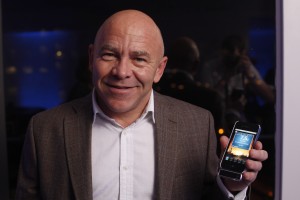In April 2014 it was reported that British children with Type 1 diabetes have successfully been entrusted to use pioneering artificial pancreas technology all by themselves, at home overnight, without the supervision of expert researchers. Meanwhile, Type 1 diabetes charity JDRF revealed people in the UK living with the condition are experiencing a ‘shockingly high’ average of ten hypos a week – laying bare the urgent need for the artificial pancreas to become an accessible reality. The latest trial, coordinated by the University and funded by JDRF, has shown for the first time globally that unsupervised use of the artificial pancreas overnight can be safe – while also providing exciting benefits.

Actor Jeremy Irvine
Participants, all aged between 12 and 18, saw improved blood glucose control during the trial, experiencing fewer night-time hypos. The figure of ten hypos per week has emerged through a first ever real-time information haul of more than 10,000 UK residents with Type 1 diabetes, released to JDRF from the mySugr app. It follows the recent revelation that 9% of all hospital admissions for children and young people with diabetes are due to hypos.
All previous artificial pancreas trials, in hospitals and in home environments, have seen researchers strictly monitor patients. News of the successful unsupervised trial garnered responses from UK celebrities who have Type 1 diabetes.
Actor Jeremy Irvine, who is a JDRF supporter, has lived with Type 1 diabetes since the age of six. He said: “When the chance came for me to take part in early artificial pancreas trials a few years ago, I jumped at the opportunity. I wanted to play my own very small part in moving the artificial pancreas closer to reality. I’m really excited to hear of this latest progress – the scientists behind it are my heroes.”

Presenter Dom Littlewood
Television presenter Dominic Littlewood gave his reaction to the statistic showing that UK people with type 1 diabetes are having 10 hypos a week. He said: “I have lived with type 1 diabetes for almost 40 years. When you do the maths, 10 per week means I may have had 20,000 hypos in my lifetime. That’s more than many people have had hot dinners. It highlights the challenge that this life-long condition represents. Worrying about hypos – let alone actually having one – is a daily stress for anyone with this condition. JDRF’s progress on the artificial pancreas means a lot to me.”

Newscaster Steve Dixon
Sky News presenter Stephen Dixon, who was diagnosed with Type 1 diabetes when he was 17, said: “I’ve always refused to let Type 1 diabetes hold me back. But minimising hypos does take considerable effort. I always carry Glucogel or a snack around with me in case I feel the symptoms of a hypo come on – which has happened when I’ve been on air. The artificial pancreas is very exciting technology. I look forward to the time when I can use one myself as part of day-to-day life.”
Dr Roman Hovorka from the University of Cambridge is leading the UK effort to develop an effective artificial pancreas. As principal researcher on the trial, he said: “The study is an important stepping stone for the wider use of an artificial pancreas. We have shown that overnight home use is feasible and beneficial – allowing people to live their life more freely. The artificial pancreas is expected to transform the treatment of type 1 diabetes and we have proven that this promise holds. The success of this trial means that larger and longer studies are already in the pipeline.”
Karen Addington, is UK Chief Executive of JDRF, the type 1 diabetes charity which funded Dr Hovorka’s study. She said: “Type 1 diabetes is a challenging and complex condition that requires constant management every day. At JDRF we remain focused on improving lives until we find the cure. Hypos are what people living with type 1 diabetes hate most. Ten hypos a week is a shockingly high figure, demonstrating just how much we need the artificial pancreas to become an accessible reality. Thankfully, the results of this latest artificial pancreas study are really exciting.”
This news item first appeared in our free-to-receive online magazine. Go to the top of this page to sign up – we just need your email address.



